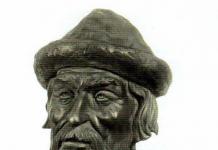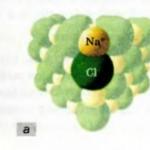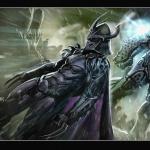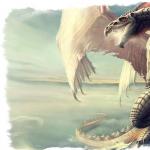The history of the Russian state goes back more than 12 centuries. Over the course of centuries, events took place that became turning points on the scale of a huge country. Top 10 important dates in Russian history collected in our top ten today.
Of course, such a list cannot be called exhaustive - in the richest Russian history there are more than one hundred significant days. However, we suggest starting small and turning to the current top ten.
September 8, 1380 - Battle of Kulikovo (Battle of the Don or Mamayevo)
This battle between the army of Dmitry Donskoy and the army of Mamai is considered a turning point in the more than two hundred years of the Tatar-Mongol yoke. The crushing defeat dealt a blow to the military and political dominance of the Horde. According to legend, the battle was preceded by a duel between the Russian hero Peresvet and the Pecheneg Chelubey.
November 24, 1480 – Fall of the Tatar-Mongol yoke
The Mongol yoke was established in Rus' in 1243 and remained unshakable for 237 years. At the end of November 1480, the Great Stand on the Ugra River ended, marking the victory of the Grand Duke of Moscow Ivan III over the Khan of the Great Horde, Akhmat.
October 26, 1612 – Liberation of the Kremlin from invaders
On this day, members of the people's militia, led by the legendary Dmitry Pozharsky and Kuzma Minin, liberate the Kremlin from the Polish-Swedish invaders. Among those who left the Kremlin was the nun Martha with her son Mikhail Romanov, who in 1613 was proclaimed the new Russian sovereign.
June 27, 1709 – Battle of Poltava
The largest battle of the Northern War ended in a decisive victory for the Russian army. From that moment on, Sweden's authority as one of the leading military powers in Europe was over. But the power of the renewed Russian army was demonstrated to the whole world.
August 26, 1812 - Battle of Borodino
The largest battle of the Patriotic War lasted 12 hours. Both armies lost 25-30% of their strength. The battle was conceived by Napoleon as a general one, and the goal was a crushing defeat of the Russian army. However, the battle ended ingloriously for the French, despite the Russian retreat, and became the beginning of the end of the Napoleonic campaign.
February 19, 1861 – abolition of Russian serfdom
The freedom of the peasants was secured by the manifesto of Emperor Alexander II, who was popularly nicknamed the Liberator. By the time the manifesto was published, the share of serfs in the Russian population was about 37%.
February 27, 1917 – February Revolution
An armed uprising in February 1917 led to the abdication of Emperor Nicholas II. These events are considered the beginning of the Soviet period in Russian history. For the next 74 years, a new form of government was established in the state.
May 9, 1945 – Signing of the Act of Unconditional Surrender of Germany
The day of the end of the Great Patriotic War was declared a national holiday immediately in 1945. Despite the fact that the first victory parade took place in the capital on Red Square on June 24, 1945, Russians celebrate Victory Day on May 9.
April 12, 1961 - Yuri Gagarin's flight into space
The first human flight into space was not only the most important event in the scientific world, but also significantly strengthened the prestige of the USSR as a military space power. In the eyes of the whole world, the authority of the Americans was undermined; space flight became decisive for a number of states that wavered in their sympathies between the Union and the United States.
December 8, 1991 – Signing of the Agreement on the Creation of the CIS (Belovezhskaya Agreement)
The agreement was signed by three leaders: Boris Yeltsin, Stanislav Shushkevich and Leonid Kravchuk. This event can be considered the date of the final collapse of the USSR. By the end of 1991, the Russian Federation was recognized by the world community and took the place of the USSR in the UN. It can be considered that from this moment the history of modern Russia began.
1097 - First congress of princes in Lyubech
1147 - The first chronicle mention of Moscow
1188 - Approximate date of appearance " Words about Igor's Campaign »
1206 - Proclamation of Temujin as the “Great Khan” of the Mongols and his adoption of the name Genghis Khan
1237-1238 — Invasion of Khan Batu in North-Eastern Rus'
1240 July 15 - Victory of the Novgorod prince Alexander Yaroslavich over the Swedish knights on the river. Neve
1327 - uprising against the Mongol-Tatars in Tver
1382 - Campaign to Moscow by Khan Tokhtamysh
1471 - Ivan III's campaign against Novgorod. Battle on the river Sheloni
1480 - “Standing” on the river. Eel. The end of the Tatar-Mongol yoke.
1510 - Pskov annexed to Moscow
1565-1572 — Oprichnina
1589 - Establishment of the patriarchate in Moscow
1606 - Uprising in Moscow and murder of False Dmitry I
1607 - Beginning of the intervention of False Dmitry II
1609-1618 — Open Polish-Swedish intervention
1611 September-October - Creation of a militia led by Minin and Pozharsky in Nizhny Novgorod
1648 - Uprising in Moscow - " Salt riot »
1649 - “Conciliar Code” of Tsar Alexei Mikhailovich
1649-1652 — Erofey Khabarov’s campaigns to the Daurian land along the Amur
1652 - Nikon’s consecration as patriarch
1670-1671 - Peasant war led by S. Razin
1682 - Abolition of localism
1695-1696 — Azov campaigns of Peter I
1812 - Invasion of Napoleon's Grand Army into Russia. Patriotic War
1814 September 19 -1815 May 28 - Congress of Vienna
1839-1843 — Monetary reform of Count E. f. Kankrina
1865 - Military judicial reform
1874 spring - The first mass “going to the people” of revolutionary populists
1875 April 25 - St. Petersburg Treaty between Russia and Japan (on South Sakhalin and the Kuril Islands)
1881 March 1 - Assassination of Alexander II by revolutionary populists
1906 November 9 - Beginning of agrarian reforms P.A. Stolypin
1930 - Beginning of complete collectivization
1939 November 30 - 1940 March 12 - Soviet-Finnish War
1941 June 22 - Attack of Nazi Germany and its allies on the USSR. Beginning of the Great Patriotic War
1945 May 8 - Act of unconditional surrender of Germany. Victory of the USSR in the Great Patriotic War
1975 July 30 - August 1 - Conference on Security and Cooperation in Europe (Helsinki). Signing of the Final Act by 33 European countries, the USA and Canada
1990 May 1-June 12 - Congress of People's Deputies of the RSFSR. Declaration of State Sovereignty of Russia
1991 December 8 - Signing in Minsk by the leaders of Russia, Ukraine and Belarus of the agreement on the “Commonwealth of Independent States” and the dissolution of the USSR
In the 11th grade, it is not necessary to know by heart all the dates from the textbook. It is enough to master the mandatory minimum, which, believe me, will be useful not only in the exam, but also in life.
So, your preparation for the OGE and Unified State Examination in History must necessarily include memorizing several of the most important dates in Russian history. Stay up to date with the most important events in Russian history - and to make it easier to master them, you can, for example, write the entire minimum on cards and divide them by century. This simple step will allow you to begin to navigate history by period, and when you write everything on pieces of paper, you will unconsciously remember everything. Your parents and grandparents used a similar method when there was no trace of any Unified State Examination or State Examination.
We can also advise you to say the most important dates in the history of Russia out loud and record it on a voice recorder. Listen to the resulting recordings several times a day, and best of all, in the morning, when the brain has just woken up and has not yet absorbed the usual daily dose of information.
But under no circumstances do we recommend that you try to memorize everything at once. Have pity on yourself, no one has ever managed to master the entire school curriculum on Russian history in a day. The Unified State Examination and the State Examination Test are designed to test how well you know the full course of the subject. So don’t even think about somehow deceiving the system or hoping for the students’ favorite “night before the exam,” as well as various cheat sheets and “answers to the State Examination and Unified State Examination in History 2015,” of which there are so many on the Internet.
With leaflets, the last hope of careless schoolchildren, state exams have always been strict, and every year the situation becomes even more difficult. Exams in the 9th and 11th grades are held not only under the strict supervision of experienced teachers, but also under the supervision of video cameras, and you know, it is almost impossible to outsmart the technology.
So get enough sleep, don’t be nervous, develop your memory and memorize 35 most important dates in the history of Russia. Relying on yourself is the best thing that can help you pass the Unified State Exam and State Examination.
- 862 Beginning of the reign of Rurik
- 988 Baptism of Rus'
- 1147 First mention of Moscow
- 1237–1480 Mongol-Tatar yoke
- 1240 Battle of the Neva
- 1380 Battle of Kulikovo
- 1480 Standing on the Ugra River. Fall of the Mongol yoke
- 1547 Ivan the Terrible crowned king
- 1589 Establishment of the Patriarchate in Russia
- 1598-1613 Time of Troubles
- 1613 Election of Mikhail Fedorovich Romanov to the kingdom
- 1654 Pereyaslav Rada.
- 1670–1671 Revolt of Stepan Razin
- 1682–1725 Reign of Peter I
- 1700–1721 Northern War
- 1703 Founding of St. Petersburg
- 1709 Battle of Poltava
- 1755 Foundation of Moscow University
- 1762– 1796 Reign of Catherine II
- 1773– 1775 Peasant War led by E. Pugachev
- 1812– 1813 Patriotic War
- 1812 Battle of Borodino
- 1825 Decembrist Revolt
- 1861 Abolition of serfdom
- 1905– 1907 First Russian Revolution
- 1914 Russia's entry into the First World War
- 1917 February Revolution. Overthrow of the autocracy
- 1917 October Revolution
- 1918– 1920 Civil War
- 1922 Formation of the USSR
- 1941– 1945 Great Patriotic War
- 1957 Launch of the first artificial Earth satellite
- 1961 Flight of Yu.A. Gagarin into space
- 1986 Chernobyl accident
- 1991 Collapse of the USSR
The Russian Federation is a state that ranks first in terms of territory and ninth in terms of population. This is a country that has gone from scattered principalities to a candidate for superpower. How did the formation of this political, economic and military colossus take place?
In our article we will look at the main dates in the history of Russia. We will see the development of the country from the first mentions of it until the end of the twentieth century.
9th - 10th century
The word “Rus” was first mentioned in 860 in connection with the siege of Constantinople (Constantinople) and the plunder of its surroundings. Researchers estimate that more than eight thousand people took part in the raid. The Byzantines did not expect an attack from the Black Sea at all, so they were unable to give a worthy rebuff. “The Rus left with impunity,” the chronicler reports.
The next important date was 862. This is one of the most significant events. According to the Tale of Bygone Years, it was at that time that representatives of the Slavic tribes invited Rurik to reign.
The chronicle says that they were tired of constant quarrels and civil strife, which only a visiting ruler could put an end to.
Like 862, the next year, 863, became important in the history of Russia. This year, according to chroniclers, the Slavic alphabet - Cyrillic - is being created. It was from this time that the official written history of Rus' begins.
In 882, Prince Oleg, Rurik’s successor, conquered Kyiv and made it the “capital city”. This ruler did a lot for the state. He began to unite the tribes, went against the Khazars, recapturing many lands. Now the northerners, Drevlyans, Radimichi pay tribute not to the Kaganate, but to the Kyiv prince.
We are considering only the main dates in the history of Russia. Therefore, we dwell only on some key events.
So, the 10th century was marked by a powerful expansion of the Rus into neighboring countries and tribes. So, Igor went against the Pechenegs (920) and Constantinople (944). Prince Svyatoslav defeated in 965, which significantly strengthened the position of Kievan Rus in the south and southeast.
In 970, Vladimir Svyatoslavovich became the prince of Kyiv. He, together with his uncle Dobrynya, whose image was later reflected in the epic hero, is preparing a campaign against the Bulgarians. He managed to defeat the Serbian and Bulgarian tribes on the Danube, as a result of which an alliance was concluded.
However, during the mentioned campaigns, the prince becomes imbued with Christianity. Previously, his grandmother, Princess Olga, was the first to accept this faith and found herself misunderstood by those around her. Now Vladimir the Great decides to baptize the entire state.
Thus, in 988, a series of ceremonies were carried out designed to baptize the majority of the tribes. Those who refused to change their faith voluntarily were forced to do so.
The last important date in the 10th century is considered to be the construction of the Tithe Church. It was with the help of this building that Christianity was finally established at the state level in Kyiv.
11th century
The eleventh century was marked by a large number of military conflicts between princes. Immediately after the death of Vladimir Svyatoslavovich, civil strife began.
This devastation continued until 1019, when Prince Yaroslav, who was later nicknamed the Wise, sat on the throne in Kyiv. He reigned for thirty-five years. It is noteworthy that during the years of his reign, Kievan Rus practically reached the level of European states.

Since we are talking briefly about the history of Russia, the most important dates of the eleventh century are associated with the reign of Yaroslav (in the first half of the century) and the period of unrest (in the second half of the century).
So, from 1019 until his death in 1054, Prince Yaroslav the Wise compiled one of the most famous codes - “The Truth of Yaroslav”. This is the oldest part of “Russian Truth”.
Over five years, starting in 1030, he built the Transfiguration Cathedral in Chernigov.
In the capital, in 1037, construction of the famous temple - Sophia of Kyiv - began. It was completed in 1041.
After the campaign against Byzantium, in 1043, Yaroslav built a similar cathedral in Novgorod.
The death of the Kyiv prince marked the beginning of the struggle for the capital between his sons. From 1054 to 1068 Izyaslav ruled. Then, with the help of an uprising, he is replaced by the Polotsk prince Vseslav. In epics he is mentioned as Volga.
Due to the fact that this ruler still adhered to pagan views in matters of faith, in folk tales the properties of a werewolf are attributed to him. In epics he becomes either a wolf or a falcon. In official history, he was given the nickname Sorcerer.
When listing the main dates in the history of Russia in the eleventh century, it is worth mentioning the creation of the “Pravda of the Yaroslavichs” in 1072 and the “Izbornik of Svyatoslav” in 1073. The latter contains descriptions of the lives of the saints, as well as their important teachings.
A more interesting document is “Russian Truth”. It consists of two parts. The first was written during the reign of Yaroslav the Wise, and the second in 1072. This collection contains norms of criminal, procedural, commercial and inheritance legislation.
The last event worth mentioning within the eleventh century was the princes. He marked the beginning of the fragmentation of the Old Russian state. There it was decided that everyone should manage only their own estate.
12th century
Oddly enough, the Polovtsians played an important role in the reunification of the ancient Russian princes. Speaking about the main dates in the history of Russia in the twelfth century, one cannot fail to mention the campaigns against these nomads in 1103, 1107 and 1111. It was these three military campaigns that united the Eastern Slavs and created the preconditions for the reign of Vladimir Monomakh in 1113. His successor was his son Mstislav Vladimirovich.
During the reign of these princes, the Tale of Bygone Years was finally edited, and there was also an increase in discontent among the people, which was expressed in the uprisings of 1113 and 1127.
After the death of Yaroslav the Wise, the political history of Europe and the history of Russia gradually became distant. The dates and events of the twelfth century fully confirm this.
While there was a struggle for power here caused by the collapse of the Kyiv state, the unification of Spain and several crusades were being carried out in Western Europe.
The following happened in Rus'. In 1136, as a result of the uprising and expulsion of Vsevolod Mstislavovich, a republic was established in Novgorod.

In 1147, chronicles first mention the name Moscow. It was from this time that the gradual rise of the city began, which was subsequently destined to become the capital of the united state.
The end of the twelfth century was marked by even greater fragmentation of the state and the weakening of the principalities. All this led to the fact that Rus' is deprived of freedom, falling into the yoke of the Mongol-Tatars.
Since these events took place in the thirteenth century, we will talk about them further.
XIII century
In this century, the independent history of Russia is temporarily interrupted. The dates, the table of Batu’s campaigns, which is given below, as well as maps of battles with the Mongols, indicate the incompetence of many princes in matters of military operations.
| The Council of Mongol Khans decides to launch a campaign against Rus', the army was led by Batu, the grandson of Genghis Khan | 1235 |
| The defeat of the Volga Bulgaria by the Mongols | 1236 |
| Subjugation of the Polovtsians and the beginning of the campaign against Rus' | 1237 |
| Siege and capture of Ryazan | December 1237 |
| Fall of Kolomna and Moscow | January 1238 |
| Capture of Vladimir by the Mongols | February 3-7, 1238 |
| The defeat of the Russian army on the City River and the death of the Vladimir prince | March 4, 1238 |
| The fall of the city of Torzhok, the return of the Mongols to the steppes | March 1238 |
| Beginning of the siege of Kozelsk | March 25, 1238 |
| Rest of the Mongol army in the Don steppes | summer 1238 |
| Fall of Murom, Nizhny Novgorod and Gorokhovets | autumn 1238 |
| Batu's invasion of the southern Russian principalities, the fall of Putivl, Pereyaslavl and Chernigov | summer 1239 |
| Siege and capture of Kyiv by the Mongol-Tatars | 5-6 September 1240 |
There are several stories where city residents were able to heroically repel invaders (for example, Kozelsk). But not a single event is mentioned when the princes defeated the Mongol army.
Regarding Kozelsk, this is simply a unique story. The campaign of the invincible army of Khan Batu, who ravaged North-Eastern Rus' from 1237 to 1240, was stopped near the walls of a small fortress.
This town was the capital of the principality on the land of the former Vyatichi tribe. According to scientists, the number of his defenders did not exceed four hundred people. However, the Mongols were able to take the fortress only after seven weeks of siege and the loss of more than four thousand soldiers.
It is noteworthy that the defense was held by ordinary residents, without a prince or governor. At this time, Mstislav’s grandson, twelve-year-old Vasily, “ruled” in Kozelsk. Nevertheless, the townspeople decided to protect him and defend the city.
After the fortress was captured by the Mongols, it was razed to the ground and all the inhabitants were killed. Neither infants nor frail old people were spared.
After this battle, the remaining important dates in the history of Russia associated with the Mongol invasion concern exclusively the southern principalities.

So, in 1238, a little earlier, a battle takes place near the Kolomna River. In 1239, Chernigov and Pereyaslavl were plundered. And in 1240 Kyiv also fell.
In 1243, the Mongol state - the Golden Horde - was formed. Now Russian princes are obliged to take the “label to reign” from the khans.
In the northern lands at this time a completely different picture occurs. Swedish and German troops are approaching Rus'. They are opposed by the Novgorod prince Alexander Nevsky.
In 1240, he defeated the Swedes on the Neva River, and in 1242 he completely defeated the German knights (the so-called Battle of the Ice).
In the second half of the thirteenth century, several punitive campaigns of the Mongols against Rus' took place. They were directed against unwanted princes who did not receive a label to rule. So, in 1252 and 1293, Khan Duden destroyed fourteen large settlements of North-Eastern Rus'.
Due to difficult events and the gradual transfer of control to the northern lands, in 1299 the patriarch moved from Kyiv to Vladimir.
XIV century
More significant dates in the history of Russia date back to the fourteenth century. In 1325, Ivan Kalita came to power. He begins to gather all the principalities into a single state. So, by 1340, some lands were annexed to Moscow, and in 1328 Kalita became the Grand Duke.
In 1326, Metropolitan Peter of Vladimir moved his residence to Moscow as a more promising city.
The plague (“Black Death”) that began in 1347 in Western Europe reached Rus' in 1352. She destroyed many people.
When mentioning important dates in the history of Russia, it is especially worth focusing on events related to Moscow. In 1359, Dmitry Ivanovich Donskoy ascended the throne. Over the course of two years, starting in 1367, the construction of the stone Kremlin in Moscow took place. It was because of this that it was later called “white stone”.
By the end of the fourteenth century, Rus' finally emerged from the rule of the Golden Horde khans. So, in this vein, important events are the battle near the Vozha River (1378) and the Battle of Kulikovo (1380). These victories showed the Mongol-Tatars that a powerful state was beginning to take shape in the north, which would not be under anyone’s authority.
However, the Golden Horde did not want to lose its tributaries so easily. In 1382 he gathered a large army and ravaged Moscow.
This was the last disaster associated with the Mongol-Tatars. Although Rus' finally freed itself from their yoke only a century later. But during this time no one else disturbed its borders.
Moreover, in 1395 Tamerlane finally destroyed the Golden Horde. But the yoke over Russia continued to exist.
15th century
The main dates in the history of Russia in the fifteenth century relate mainly to the unification of lands into a single Moscow state.
The first half of the century passed in civil strife. During these years, Vasily I and Vasily II the Dark, Yuri Zvenigorodsky and Dmitry Shemyaka were in power.
The events of the first half of the fifteenth century are a little reminiscent of 1917 in the history of Russia. The civil war that followed the revolution also revealed many appanage princelings, gang leaders, who were subsequently destroyed by Moscow.
The reason for the civil strife lay in the choice of ways to strengthen the state. Externally, the political activities of the provisional rulers were connected with the Tatars and Lithuanians, who sometimes carried out raids. Some princes were guided by the support of the East, others trusted the West more.
The moral of decades of civil strife was that those who did not rely on external support, but strengthened the country from within, won. Thus, the result was the unification of many small appanage lands under the rule of the Grand Duke of Moscow.
An important step was the establishment of autocephaly in the Russian Orthodox Church. Now the metropolitans of Kyiv and all Rus' were proclaimed here. That is, dependence on Byzantium and the Patriarch of Constantinople was destroyed.
In the course of feudal wars and religious misunderstandings, the separation of the Moscow Metropolis from the Kyiv Metropolis took place in 1458.
The discord between the princes ended with the accession of John III. In 1471 he defeated the Novgorodians in the Battle of Shelon, and in 1478 he finally annexed Veliky Novgorod to the Moscow Principality.
In 1480 one of the most significant events of the fifteenth century took place. It is known in the chronicles under the name This is a very interesting story, which contemporaries considered “the mystical intercession of the Virgin Mary.” gathered a large army and opposed Ivan III, who was in alliance with the Crimean Khan.
But there was no battle. After the troops stood against each other for a long time, both armies turned back. Researchers in our time have found that this was caused by the weakness of the Great Horde and the actions of sabotage detachments in the rear of Akhmat.
Thus, in 1480, the Moscow Principality became a completely sovereign state.
The year 1552 was similar in importance in the history of Russia. We'll talk about it a little later.
In 1497, the Code of Laws, a set of laws for all residents of the state, was officially adopted and approved.
16th century
The sixteenth century is characterized by powerful processes of centralization of the country. During the reign of Vasily III, Pskov (1510), Smolensk (1514) and Ryazan (1521) were annexed to Moscow. Also for the first time in 1517 it was mentioned as a state governing body.
With the death of Vasily III, a slight decline of Muscovy begins. The rules at this time were Elena Glinskaya, who was replaced by Boyar power. But the grown-up son of the deceased prince, Ivan Vasilyevich, put an end to arbitrariness.

He ascended the throne in 1547. Ivan the Terrible began with foreign policy. In the state itself, in fact, until 1565, the prince relied on zemsky councils and boyars. During these eighteen years, he was able to annex many territories.
The year 1552 is noteworthy in the history of Russia. Then Ivan the Terrible captures Kazan and annexes the Khanate to the Moscow state. In addition to it, such territories as the Astrakhan Khanate (1556) and the city of Polotsk (1562) were conquered.
The Siberian Khan in 1555 recognized himself as a vassal of Ivan Vasilyevich. However, in 1563, Khan Kuchum, who replaced him on the throne, breaks off all relations with Muscovy.
After a decade and a half of conquests, the Grand Duke turns his attention to the internal situation in the country. In 1565, the oprichnina was established and persecution and terror began. All boyar families that began to attach themselves to power are destroyed, and their property is confiscated. Executions continued until 1572.
In 1582, Ermak began his famous campaign in Siberia, which lasted a year.
In 1583, peace was signed with Sweden, returning to the latter all the lands conquered during the war.
In 1584, Ivan Vasilyevich dies and Boris Godunov actually comes to power. He became a real tsar only in 1598, after the death of Fedor, the son of Ivan the Terrible.
In 1598, the Rurikovich line was interrupted, and after the death of Boris (in 1605), the Time of Troubles and the Seven Boyars began.
17th century
The most important event was 1613 in the history of Russia. He influenced not only this century, but the next three hundred years. This year the turmoil ended and Mikhail, the founder of the Romanov dynasty, came to power.
The seventeenth century is characterized by the processes of formation and development of the Muscovite kingdom. In foreign policy, conflicts occur with Poland (1654) and Sweden (1656). From 1648 to 1654 there was an uprising in Ukraine led by Khmelnytsky.
There were riots in the Moscow kingdom itself in 1648 (Solyanoy), 1662 (Medny), 1698 (Streletsky). In 1668-1676 there was an uprising on the Solovetsky Islands. And from 1670 to 1671, the Cossacks rebelled under the leadership of Stenka Razin.
In addition to political and economic turmoil, religious turmoil and schism were brewing in the mid-seventeenth century. tried to reform the spiritual life of society, but was not accepted by the Old Believers. In 1667 he was convicted and sent into exile.
Thus, over the course of seven decades, the process of forming a single state took place, in which different institutions “grinded in” to each other. It ends with the accession of Peter I.

It turns out that 1613 in the history of Russia marked the beginning of a departure from feudalism. And Pyotr Alekseevich turned the kingdom into an empire and brought Russia to the international level.
XVIII century
The century of the most powerful rise that the history of Russia has ever known - the 18th century. The dates of the founding of new cities, universities, academies and other places speak for themselves.
So, in 1703 St. Petersburg was built. In 1711 the Senate was established, and in 1721 the Synod. In 1724 the Academy of Sciences was founded. In 1734 - the main military educational institution of the country, the Land Noble Corps. In 1755, Moscow University was created. These are just some of the events that show powerful cultural growth in the state.
In 1712, the capital was moved from “old” Moscow to “young” St. Petersburg. In addition, in 1721, Russia was proclaimed an empire, and Peter Alekseevich was the first to receive the corresponding title.
The eighteenth century will be of particular interest to those interested in the military history of Russia. The dates and events of this century show the unprecedented power of the Russian army and navy, as well as the wonders of engineering.
The country entered the nineteenth century as a powerful empire that defeated Turkey, Sweden, and the Polish-Lithuanian Commonwealth.
19th century
If a feature of the previous century was the cultural and military growth of the state, then in the next period there is a slight reorientation of interests. Rapid economic development and the separation of the government from the people - all this is the history of Russia, the 19th century.
The dates of significant events of that time tell us about the growth of bribery among officials, as well as about the authorities’ attempts to create thoughtless performers from the lower strata of society.
The main military conflicts of this century were the Patriotic War (1812) and the confrontation between Russia and Turkey (1806, 1828, 1853, 1877).
In domestic politics, many reforms are taking place aimed at further enslaving ordinary people. These are Speransky's reforms (1809), great reforms (1862), judicial reform (1864), censorship reform (1865), and universal military service (1874).
Even if we take into account the abolition of serfdom in 1861, it is still clear that the bureaucracy strives for maximum exploitation of the common people.
The response to this policy was a series of uprisings. 1825 - Decembrists. 1830 and 1863 - uprising in Poland. In 1881, the Narodnaya Volya killed Alexander II.
In the wake of general dissatisfaction with the government, the position of the Social Democrats is strengthening. The first congress took place in 1898.
XX century
Despite the wars, disasters and other horrors discussed above, some dates of the 20th century are especially terrible. Until that time, the history of Russia had not known such a nightmare as the Bolsheviks created in the first quarter of the century.
The 1905 revolution and participation in the First World War (1914-1917) were the last straw for ordinary workers and peasants.
The year 1917 will be remembered for a long time in the history of Russia. After the October Revolution and the abdication of Nicholas II, his family was captured and executed in July 1918. A civil war begins, which lasted until 1922, when the Union of Soviet Socialist Republics was formed. A similar revolution and devastation marked 1991 in the history of Russia.
The first years of the existence of the new state were marked by social disasters of enormous proportions. These are famine in 1932-1933 and repression in 1936-1939.

In 1941, the USSR entered World War II. In our historical tradition, this conflict is called the Great Patriotic War. After the victory in 1945, the restoration and short-term rise of the country began.
1991 became a turning point in the history of Russia. The Soviet Union collapsed, leaving all dreams of a “bright future” under the rubble. In fact, people had to learn how to live from scratch in a market economy in a new state.
Thus, you and I, dear friends, briefly went through the most significant events in the history of Russia.
Good luck, and remember that the answers to the future are stored in the lessons of the past.


















